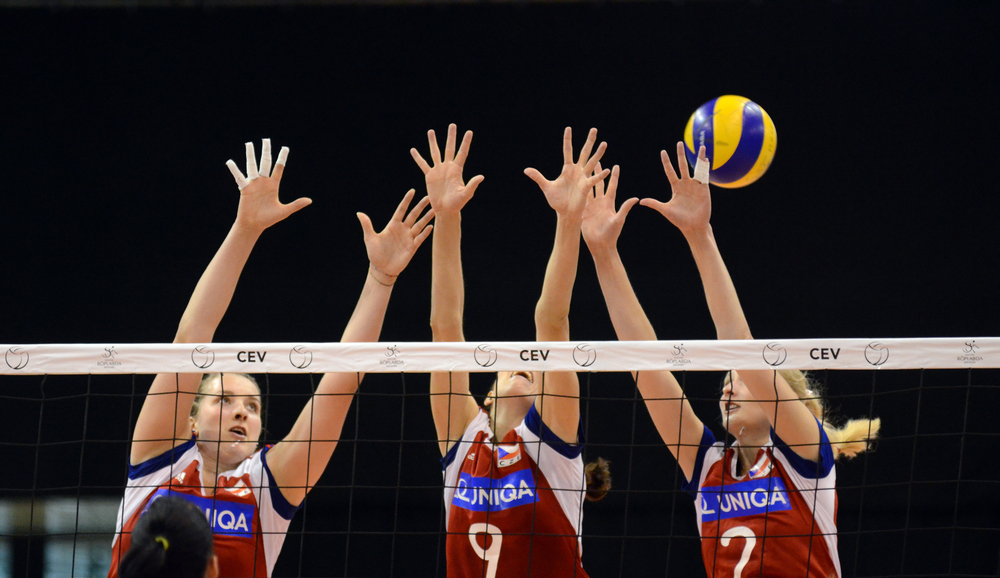Platelet-rich plasma vs focused shock waves in the treatment of jumper’s knee in athletes
Posted on 17th March 2014 by Jesse Scheidecker

Introduction:
The condition known as jumper’s knee, also known as patellar tendonitis, is an insertional tendinopathy (inflammation of the muscle at the point where it attaches to bone) of the patellar tendon of the quadriceps, muscles of the front portion of the thigh. Jumper’s knee commonly occurs in athletes at all age levels involved in jumping sports such as basketball and volleyball. Gradual onset of pain at the front of the knee below the knee cap is the most common complaint of patients experiencing jumper’s knee. This pain may subside with a short rest period just to reoccur upon return to aggravating activities. True diagnosis of jumper’s knee is usually done with ultrasound or MRI and can be used to help guide treatment. The overall prevalence of jumper’s knee, according to previous studies, is 14% in the athletic population with a 45% recurrence rate in volleyball players and 32% in basketball players marking the highest rates seen in any sports observed. Common treatment of jumper’s knee, especially in the initial phase, consists of rest, ice, stretching, and physical therapy focusing on hamstring, muscles of the back portion of the thigh, flexibility and the strengthening of the quadriceps. Platelet-rich plasma (PRP) injections and extracorporeal shock wave therapy (ESWT) are more recent interventions being utilized to treat conditions such as jumper’s knee and Achilles tendinopathies (inflammation or swelling of the Achilles tendon). PRP is used for pain relief and is believed to promote healing of musculoskeletal injuries. PRP works by injecting the patients blood that has been centrifuged, spun at a high speed, to concentrate platelets and several different growth factors that stimulate healing of bone and soft tissue. ESWT uses an intense, but very short, energy or pressure wave that is transmitted through a sound head, much like ultrasound, to increase the healing potential of the injured tissues. Having been an athlete my whole life I was lucky to have never experienced such an injury but I know several of my teammates did and their symptoms were very difficult to resolve. I wanted to look into alternative treatments that can be used for injuries of this nature and if they are effective, on their own or in conjunct with traditional methods, in the complete resolution of these injuries.
About the study:
The purpose of this study by Vetrano et al was to compare the effectiveness and safety of platelet-rich plasma (PRP) injections and extracorporeal shock wave therapy (ESWT) in athletes with jumper’s knee. The study was a randomized control trial with 46 athletes randomized into two treatment groups (23 into each): PRP injections or ESWT. Both groups were the same in terms of age, sex, level of sports participations, and pretreatment clinical status.
The inclusion criteria for this study was as follows:
- Chronic unilateral tendinopathy (pain and inflammation of the patellar tendon of greater than three months that was isolated to just one knee) identified on ultrasound examination
- Established diagnosis of chronic jumper’s knee at the insertion of the patellar tendon at the lower pole of the patella (knee cap) for at least 6 months before treatment and failure of non-operative management.
- At least 12 weeks between non-operative therapy and initiation of this study
- Between 18-50 years of age and capable of completing questionnaires and giving informed consent.
- Active in various sports as elite and non-elite athletes.
The exclusion criteria for this study were as follows:
- Bilateral complaints (complaints in both knees)
- Signs or symptoms of other, coexisting knee lesions
- Knee surgery or injection therapy with corticosteroids in the past 3 months
- Systemic disorders such as:
o Diabetes
o Rheumatoid arthritis
o Cardiovascular disease
o Infections
o Immune system depression
o Neoplastic disease
- Therapy with anticoagulants-antiaggregants (substances that slow or stop the clotting of blood and the formation of semisolid elements in the blood)
- Platelet values fewer than 150,000/mm3
- and pregnancy
The PRP group received two injections of approximately 2 mL of platelet rich plasma over two weeks performed under ultrasound guidance. The ESWT group received 3 sessions of ESWT (2.400 impulses at 0.17-0.25 mJ/mm2 per session) with 48-72 hours between sessions. Each group received treatment from an author that was not involved in the assessment of these patients post treatment. Both groups could fully weight bear on the treated limb immediately post treatment. One week after treatment both groups received the same standardized stretching and strengthening protocol to be followed for 2 weeks and they could begin water activities if discomfort and pain were minimal. The stretching protocol included hip flexor, quadriceps, hamstring, and calf stretches. The strengthening protocol included quad sets, straight leg raises, side leg raises (abduction and adduction), and hip extension leg raises. After 4 weeks patients were allowed to gradually return to previous training activities if there was minimal or no pain. Complete return to sports activities took place in accordance with the patient’s pain tolerance and absence of clinical signs. The outcome measures that were used for this study were the Victorian Institute of Sports Assessment- Patella (VISA-P) questionnaire, pain visual analog scale (VAS), and modified Blazina scale. A reviewer who was blinded as to the group each participant belonged to performed assessments before treatment and at 2, 6, and 12 month after treatment.
Results:
Patients in both groups showed statistically significant improvements of symptoms at all follow-up assessments. The VISA-P, VAS, and modified Blazina scale scores showed no significant differences between groups at the two-month follow-up. The PRP group, however, showed significantly better improvement than the ESWT group with regards to the VISA-P, VAS scores at 6 and 12 month follow-up, and modified Blazina scale score at the 12 month follow-up. This study concluded that therapeutic injections of PRP may lead to better mid and long term clinical results compared with focused ESWT in the treatment of jumper’s knee in athletes.
Strengths & weaknesses:
This study, like most studies, had several strengths and limitations. Some of the strengths include: being the first randomized controlled trial to compare PRP with ESWT for treatment of jumper’s knee, having the same post treatment stretching and strengthening protocol for both groups, the blinding of one single evaluator for all assessments (before, and 2,6, and 12 months post treatment), well laid out methods to make this a reproducible study, and the clinical relevance of these interventions for many professions within the health and wellness of these athletes. Some of the limitations include: limited hard evidence from randomized controlled trial studies on the effectiveness of PRP injections and ESWT, the lack of standardized treatment protocols for both PRP injections and ESWT, the possible multifaceted mechanism of action of the PRP injections (PRP effects as well as a needling effects), small number of patients enrolled, lack of a control group (either no treatment or tradition, conservative treatment), follow up assessments only qualitative in nature rather than a quantitative assessment with ultrasound or MRI, and even though the evaluator was blinded there was no way to blind the patients to which treatment they were receiving.
Take home message:
The take home message of this study was that both PRP injections and ESWT can be used alone or in conjunction with traditional therapeutic interventions, such as PT, to improve symptoms and function in patients with jumper’s knee. Also, if PRP is available it has shown greater mid and long term improvements in the resolution of jumper’s knee in athletes. Further studies need to be performed to standardize treatment protocols for both interventions, as well as, assessing the effects of each intervention quantitatively using ultrasound or MRI. Treatment should remain conservative initially but either PRP or ESWT can be utilized in lieu of surgery for improvements in symptoms for these patients.
References:
Vetrano M, Castorina A, Vulpiani MC, Baldini R, Pavan A, Ferretti A. Platelet-Rich Plasma Versus Focused Shock Waves in the Treatment of Jumper’s Knee in Athletes. Am J Sports Med. 2013;41(4):795–803.




No Comments on Platelet-rich plasma vs focused shock waves in the treatment of jumper’s knee in athletes